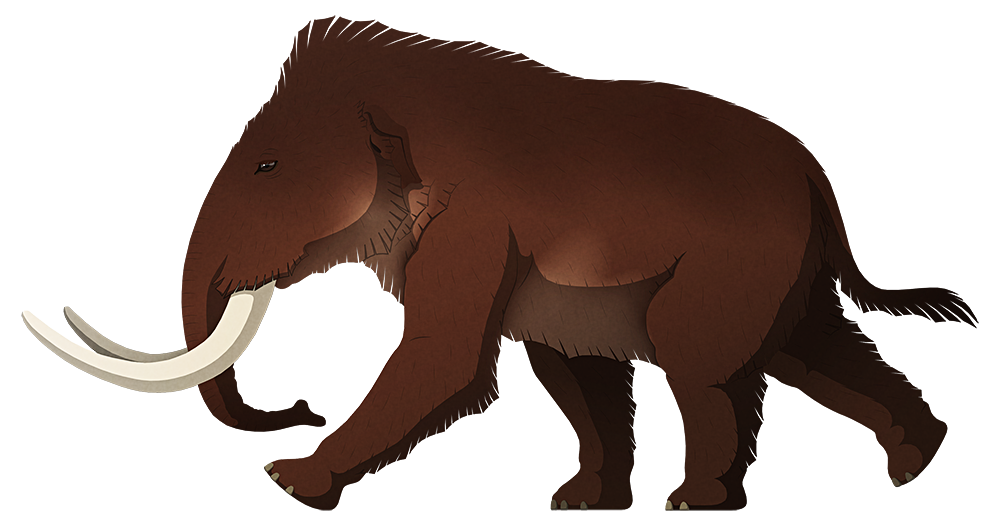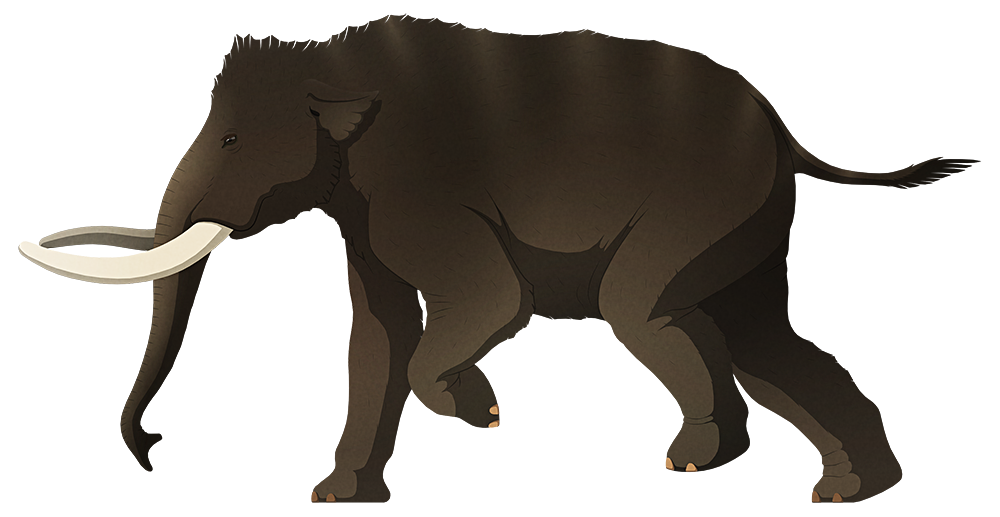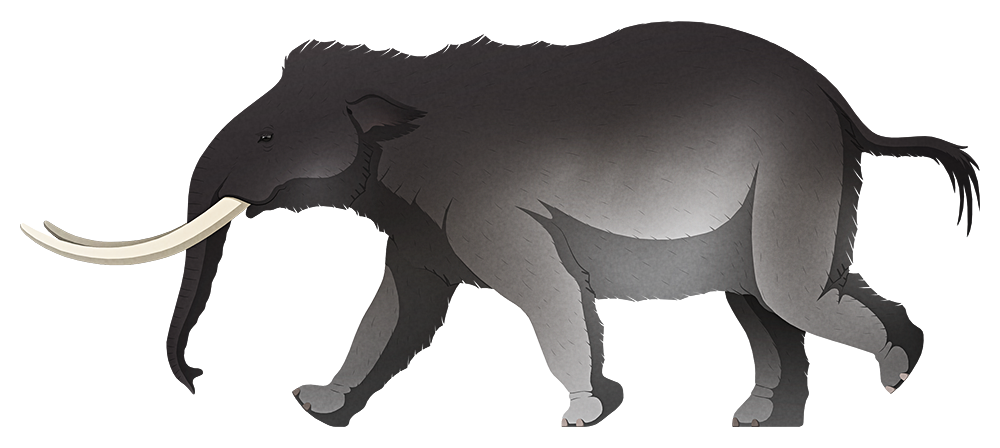During the Pleistocene elephants colonized many of the islands in the Mediterranean Sea, with each island independently developing its own unique dwarfed form.

Mammuthus lamarmorai lived on the island of Sardinia during the middle and late Pleistocene, between about 450,000 and 40,000 years ago. Standing around 1.4m tall at the shoulder (4’7″), it was a dwarf form roughly one-third the size of its ancestor, the huge Eurasian steppe mammoth.
Its remains are known only from the west and south of the island. Strangely it appears to be have been absent from the nearby island of Corsica, despite the two being joined as a single landmass a few times during lower sea level periods in the Pleistocene.
It’s not clear why this mini-mammoth disappeared. The date of the earliest human settlement of Sardinia is controversial (ranging from 250,000 to 20,000 years ago), so Mammuthus lamarmorai might never have actually encountered them. Instead it may have struggled to cope with climate changes during the last glacial period towards the end of the Pleistocene, which rapidly turned Sardinia colder and drier.

Over on Sicily and Malta (which were also occasionally a single island when sea levels were lower), there were several different species of miniature elephant during the mid-to-late Pleistocene, each with a different body size and occupying its own ecological niche. They were all descendants of the massive straight-tusked elephant (Palaeoloxodon antiquus) but each resulted from independent colonization waves swimming over to the island(s).
Palaeoloxodon falconeri lived during the mid-Pleistocene, about 550,000 years ago, and was both the smallest of the Mediterranean dwarfs and possibly the smallest elephant to ever exist. Just 0.8-1m tall (2’7″-3’3″), it had adult body proportions resembling the juveniles of its ancestors, limbs adapted for running and clambering over rough terrain, and a proportionally enormous brain relative to its body size.
Around 200,000 years ago a sea level drop allowed new colonization from the Italian mainland. If Palaeoloxodon falconeri was still around at that time it likely didn’t survive long with new competition from large herbivores like bison and deer, and being preyed on by newly-arriving large carnivores like wolves, lions, and hyenas.
Another small elephant soon evolved to take its place, although due to the presence of predators it was never able to get nearly so tiny.

Palaeoloxodon mnaidriensis was in fact one of the largest dwarf elephants in the Mediterranean, standing about 1.8-2m tall (5’11”-6’6″), but despite its larger size its limbs still show signs of adaptation for more fast and agile movement. Its tusks also show a lot of variation in shape, with some much more curved and twisted than others.
This elephant had disappeared by about 13,000 years ago, probably due to the climate significantly warming towards the end of the last ice age. Much like Sardinia, the earliest arrival of humans on Sicily and Malta is controversial, and it’s unclear whether they ever encountered Palaeoloxodon mnaidriensis — the earliest definite date for Sicily is about 16,000 years ago, so a human-induced extinction can’t be ruled out entirely.
The subfossil remains of the Siculo-Maltese elephants may have also ended up inspiring legends of the cyclops, as their skulls would have resembled large human ones with the nasal cavity forming a single big “eye socket”.



